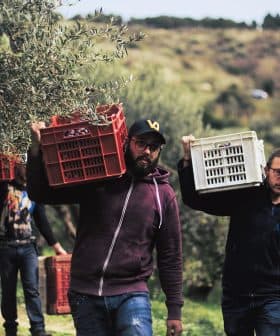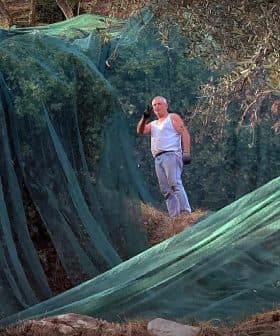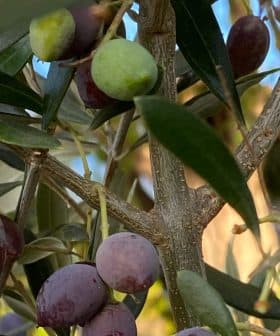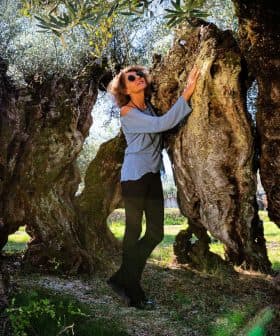Italian Farmers Take Stock of Current Harvest, Look Ahead to Challenges
As the vegetative restart approaches, olive farmers and producers in Italy are preparing for the challenges of unpredictable climate extremes.
 Tuscany, Italy
Tuscany, Italy In the 2022/23 crop year, central and northern Italy saw an increase in olive oil production, while the south experienced a decrease due to weather-related issues. Despite challenges such as drought, heat waves, and fruit fly attacks, Italian olive oil producers have managed to maintain high-quality production by implementing strategic measures and adapting to the changing climate. The need for careful planning, proactive decision-making, and a focus on the physiology of the plant is crucial for olive growers to navigate the challenges of producing high-quality olive oil in the face of unpredictable weather conditions.
Most of central and northern Italy increased olive oil production in the 2022/23 crop year, while the south experienced a drop.
Puglia, Sicilia and Calabria, which usually contribute a significant share of the national output, suffered from an ‘off-year’ in the olive trees’ natural alternate bearing cycle and a series of weather-related issues.
The last olive oil crop year was complex, and nevertheless, over the past years, we have become aware that challenging harvests are no longer the exception but the rule.
Since the first phenological phases, olive groves across the country have been affected by a lack of rain. Some areas were also hit by late frosts, which hindered flowering and fruit setting and led to several cases of fruit drop, according to the Institute of Services for the Agricultural and Food Market (Ismea). Then, the prolonged drought and very high temperatures hindered vegetative development.
As the olive trees’ vegetative restart approaches in the Northern Hemisphere, Italian producers are taking stock of the current situation and looking at the challenges ahead.
See Also:2022 Harvest Updates“Last summer will be remembered as one of the hottest,” Tuscan producer Matteo Frescobaldi told Olive Oil Times.
“We had many days full of sunshine, and our plants partly benefited from this condition, which led to an excellent fruit setting in early June,” he added. “However, the scarcity of precipitation that lasted through July gave rise to serious concern.”
According to LaMMA (the Environmental Monitoring and Modeling Laboratory for Sustainable Development), a cooperative effort between Tuscany and the Italian National Research Council, five heat waves were recorded in Florence during the summer of 2022, the longest of which lasted for 15 days, from July 14 to 28.
On June 27, the synoptic weather station of Florence Peretola, located in the north of the city, recorded a temperature of 41 °C, the highest value ever recorded by the station in June.
Furthermore, the European Union’s Copernicus Climate Change Service said the summer of 2022 was the hottest on record in Europe. However, it was Italy’s second hottest after the summer of 2003.
“The last olive oil crop year was complex, and nevertheless, over the past years, we have become aware that challenging harvests are no longer the exception but the rule,” said Angelo Bo, an agronomist.
“In Tuscany, until mid-August, heat and drought made us fear the worst for the health of the plants and fruits, but eventually, thanks to the rain that fell in the second half of the month, the trees managed to recover and reach what we might define as an optimal development,” he added.
According to LaMMA, summer precipitation in Tuscany was only slightly below average (with a rain deficit of 19 percent). Still, it rained very little in June and July, which recorded a deficit of 75 and 60 percent, respectively. Instead, the rain was concentrated in August, which recorded values well above average (80 percent).
“The rains that arrived in late August were a real godsend,” Frescobaldi said. “They allowed the plants to rehydrate in the crucial early phase of the oil accumulation process in the fruits.”
Then, the temperatures started to drop in the Florentine hills between September and October, resulting in a substantial temperature difference between day and night.
“This factor has favored a good development of the organoleptic properties that characterize the great oils of central Tuscany,” said Frescobaldi, who started the harvest smoothly in early October as usual.
However, this was not so for many growers in the south, who had to plan to stave off the adverse impact of a warm, humid climate.
Nevertheless, according to Ismea, many producers managed to obtain extra virgin olive oil with a higher level of quality than it would be under normal conditions despite these setbacks.
“After a prolonged drought, within three weeks, a hot and humid climate was favored by light and steady rains,” said Donato Conserva, the Apulian producer behind Mimì.
“This created the ideal environment for the olive fruit fly,” she added. “A massive attack of this dipteran threatened the results obtained with irrigation. Despite having to discard about 30 percent of fruits, we were still able to obtain a good production.”
The quality has remained very high also due to some of the measures Conserva took, including her decision to hire more workers.
“We have recruited double the number of workers, which has allowed us to speed up the operations and pick healthy fruits in time,” Conserva said.
The ongoing weather issues have significantly impacted how olive growers and millers work throughout the harvest.
Careful advanced planning for harvesting and milling operations has become necessary to meet the challenges of olive farming, avoid losses and keep quality standards high.
“In Puglia, there has been a drop in production of at least 35 percent mainly due to a drought that we have not seen for 70 years,” the Apulian agronomist Cosimo Damiano Guarini said. “We know the olive tree is a xerophytic plant and therefore needs little water, but water is required during crucial phases, such as flowering, fruit setting and oil accumulation, to obtain quality.”
“The farmers who used an irrigation system were able to mitigate the effects of the lack of rain and face the high production costs,” he added. “However, those who do not use it or cannot afford the expense inevitably experienced a production decline.”
Damiano Guarini said another new challenge to consider is the rapid ripening of fruits triggered by the very high temperatures in many areas as the harvest approached. Indeed, anomalies in the development of fruits were widely reported throughout the country.
“In Tuscany, some farmers were alarmed by an unexpected early ripening and asked to open the mill facilities in advance,” Bo said. “However, the development of fruits was very uneven, especially in the interior of the region.”
“According to the variety, the fruits showed a regular ripening in some areas, while in others, they were already ripe in mid-October and became overripe quickly,” he added. “In some other cases, early developing varieties instead developed the best of their aromatic profiles later, at the beginning of November.”
“For example, in January, I collected several green olives, then apparently unripe but with the pulp in an advanced state of ripeness,” Bo continued. “This means that we cannot rely solely on the color to understand whether the olives are ready to be harvested. And this further indicates the difficulty of interpreting the empirical values available to us.”
It has become clear that high-quality olive oil producers and farmers must be proactive, accurately scheduling the work and making strategic decisions.
“The approach of quality growers now acknowledges that production may be reduced in quantity but must maintain high quality levels,” Guarini said. “Not only must they calculate times and costs in advance, but they also have to take production decisions in itinere.”
“For example, if they produce blends, they can choose which varieties or what percentage of a variety to use in a product, opting every year for varieties less affected by the increasingly frequent weather extremes,” he added.
In this scenario, ensuring quality becomes challenging, but the right approach can provide great satisfaction.
“Despite all these difficulties, farmers who were able to analyze the situation and worked on prevention have been repaid by the healthy olives, which delivered excellent extra virgin olive oils, often characterized by very pleasant and intense aromas,” Guarini said
“This is telling us that we should adapt our agronomic management to the challenges ahead by focusing on the physiology of the plant and its balance,” he added. “We must act quickly and accurately to better cope with an ever-changing situation.”
Share this article









